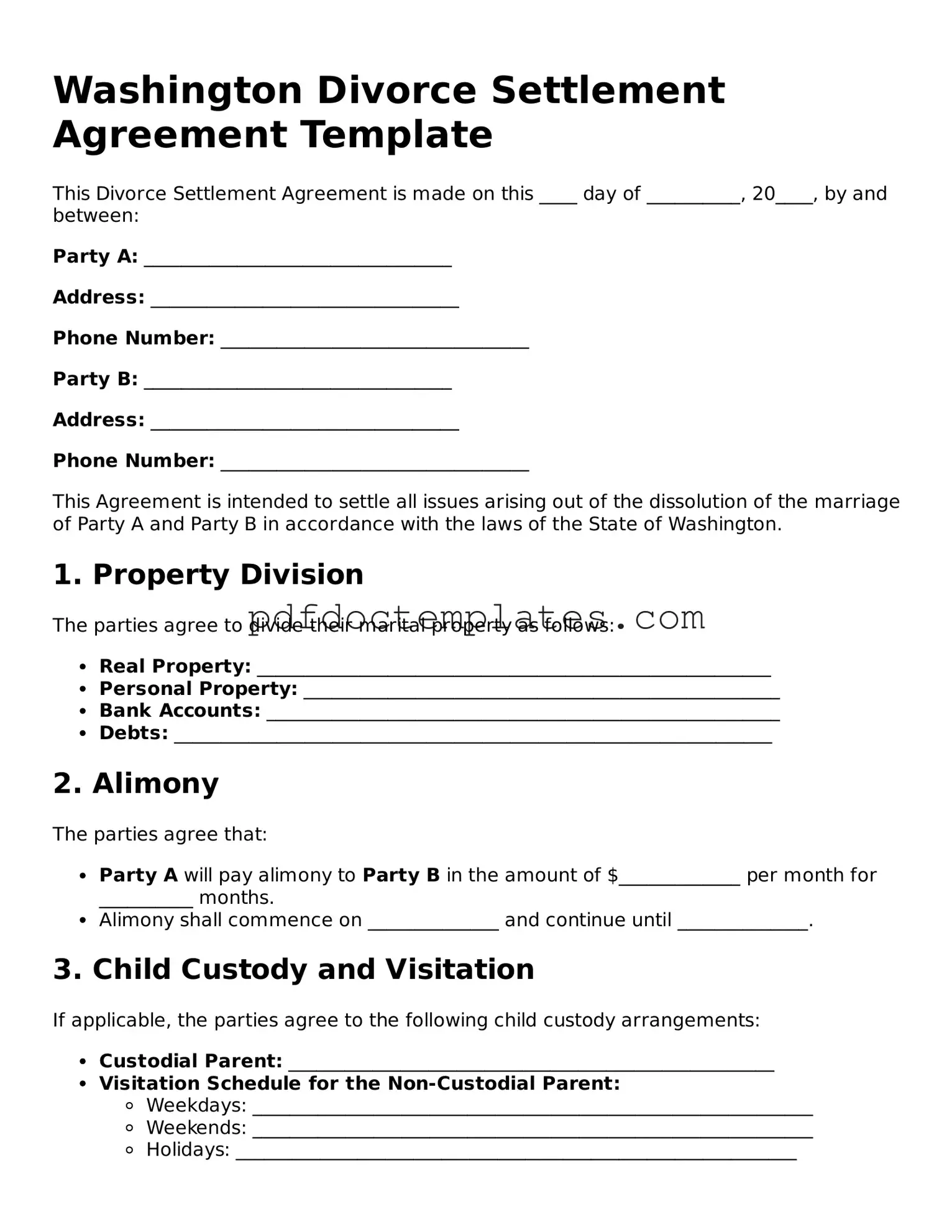Washington Divorce Settlement Agreement Template
This Divorce Settlement Agreement is made on this ____ day of __________, 20____, by and between:
Party A: _________________________________
Address: _________________________________
Phone Number: _________________________________
Party B: _________________________________
Address: _________________________________
Phone Number: _________________________________
This Agreement is intended to settle all issues arising out of the dissolution of the marriage of Party A and Party B in accordance with the laws of the State of Washington.
1. Property Division
The parties agree to divide their marital property as follows:
- Real Property: _______________________________________________________
- Personal Property: ___________________________________________________
- Bank Accounts: _______________________________________________________
- Debts: ________________________________________________________________
2. Alimony
The parties agree that:
- Party A will pay alimony to Party B in the amount of $_____________ per month for __________ months.
- Alimony shall commence on ______________ and continue until ______________.
3. Child Custody and Visitation
If applicable, the parties agree to the following child custody arrangements:
- Custodial Parent: ____________________________________________________
- Visitation Schedule for the Non-Custodial Parent:
- Weekdays: ____________________________________________________________
- Weekends: ____________________________________________________________
- Holidays: ____________________________________________________________
4. Child Support
The parties agree that:
- Child support shall be paid by Party A / Party B in the amount of $_____________ per month.
- Support payments shall begin on ______________.
5. Miscellaneous
The parties agree to the following additional terms:
- Dispute Resolution: _____________________________________________________
- This Agreement shall be governed by the laws of the State of Washington.
IN WITNESS WHEREOF, the parties have executed this Agreement as of the day and year first above written.
Party A Signature: _________________________________ Date: ___________
Party B Signature: _________________________________ Date: ___________
